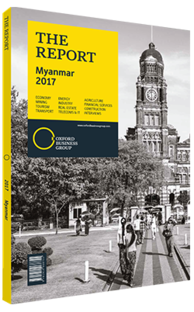Myanmar's new economic zones act as drivers of growth
Special economic zones (SEZs) are essential to Myanmar’s development. While the country is liberalising rapidly, the process will take some time. Regulations have to be written, and infrastructure needs to be upgraded in areas with legacy issues.
Thilawa
The development of Thilawa SEZ, which lies 25 km from Yangon, has been smooth. The first phase, the 400-ha zone A, was opened in 2015, with more than 40 companies committed to operate at the site. The first phase of zone B has also been agreed on. Thilawa will ultimately be a 2500-ha SEZ. It offers resident companies tax holidays of five to seven years, and capital goods can be imported tax-free. Raw materials may also be tax exempt. In addition, the zone offers professional administration, solid infrastructure and a lack of bureaucracy.
Thilawa has a stable shareholder base – which includes the governments of Myanmar and Japan, as well as private investors from both countries – and is listed on the newly formed Yangon Stock Exchange. The shareholders include three of Japan’s largest and most established general trading companies – Mitsubishi, Marubeni and Sumitomo. More than half of the firms committed to set up in the zone are from Japan, although 13 countries are represented in total.
While some concerns had been raised about whether projects initiated before the current administration took over would survive, the company running Thilawa has said that the SEZ has the full backing of the country’s leaders and is a high priority. “It is part of the new government’s mandate to see it succeed. Not only to promote it, but also to protect it,” said U Thurane Aung, vice-president of Myanmar Japan Thilawa Development. “The government knows there is a need to develop the SEZ.”
Kyaukphyu
In late 2015 the right to develop Kyaukphyu SEZ in Rakhine State was awarded to a six-member consortium led by Chinese interests, with Thailand’s Charoen Phokphand one of the partners. The project has faced developmental problems, including the accusation that it did not properly take into account the concerns of local residents, but is nevertheless moving ahead. The 1708-ha site will have two deep-sea ports, a 978-ha industrial zone and a 494-ha housing development. India has also discussed building an SEZ in Myanmar, proposing a project at Sittwe, also in Rakhine.
Dawei
The largest and most ambitious project is also making significant headway. Formed under a memorandum of understanding in 2008, Dawei SEZ has progressed slowly. Lack of funding and infrastructure, opposition from local residents, disagreements among the partner nations and the abandonment of the project by two private sector partners resulted in delays. However, in December 2015 Japan signed on as an equal partner with Thailand and Myanmar in the SEZ. In June 2016 Thailand’s prime minister, Prayuth Chan-ocha, reaffirmed his country’s support, saying that the SEZ would create jobs and improve lives.
The new National League for Democracy-led government is reviewing projects that were signed before it came to power, wanting to ensure that all foreign agreements are beneficial for the country. It may look into potential irregularities, including whether the SEZ was planned to take into account the environmental and social impact of the site. However, the Dawei project is likely to stay on track, as the benefits of developing it are likely to outweigh the concerns. For Myanmar, it will be a great boost to the local economy; for Thailand, a source of relatively inexpensive manufacturing; and for Japan, an important part of its regional supply chain.
Dawei’s size suggests that interest will remain strong. Built on some 20,000 ha and including a port, blast furnaces, refineries and liquefied natural gas storage, it is one of South-east Asia’s largest development projects. Financial daily The Nikkei reports that construction on the site will be ongoing for 50 years.
You have reached the limit of premium articles you can view for free.
Choose from the options below to purchase print or digital editions of our Reports. You can also purchase a website subscription giving you unlimited access to all of our Reports online for 12 months.
If you have already purchased this Report or have a website subscription, please login to continue.

